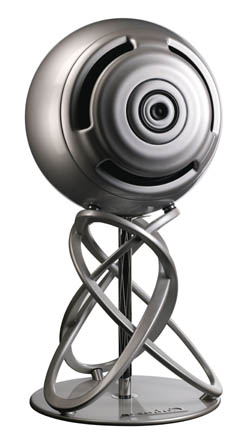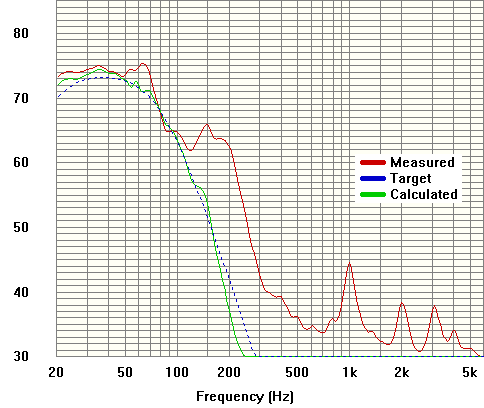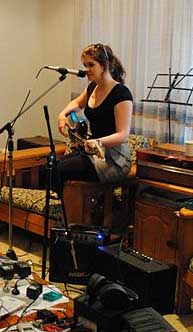My brother kindly pointed me an article in the Wall Street Journal by Francis Fukuyama, entitled ‘All Hail Analog?’. Fukuyama is best known as a kind of historical analyst, generally of a conservative bent. In the late 80s and early 90s he was famous for his thesis on the theme of ‘The End of History’, in which he suggested that with the end of the Soviet bloc, human history is likely to settle down into a broadly liberal democratic arrangement, with little of the major ideological competition that had marked the decades leading to that time.
If you’re going to read something of his, I recommend his 1995 book ‘Trust: The Social Virtues and the Creation of Prosperity’.
But his view on analogue vs digital, which his article is about? Not so good. Here are a few of the surprisingly silly parts of the essay.
Ansel Adams’s iconic images of the Sierras were taken with an 8-inch-by-10-inch view camera, a wooden contraption with bellows in which the photographer saw his subject upside-down and reversed under a black cloth. Joel Meyerowitz’s stunning photographs of Cape Cod were taken with a similar mahogany Deardorff view camera manufactured in the 1930s. These cameras produce negatives that contain up to 100 times the amount of information produced by a contemporary top-of-the-line digital SLR like a Canon EOS 5D or a Nikon D3. View cameras allow photographers to shift and tilt the lens relative to the film plane, which is why they continue to be used by architectural photographers who want to avoid photos of buildings with the converging vertical lines caused by the upward tilt of the lens on a normal camera. And their lenses can be stopped down to f/64 or even f/96, which allows everything to be in crystalline focus from 3 inches away to infinity.
And what has any of this to do with digital vs analogue? Why, nothing! Why would you compare Adams’ camera to a standard SLR? There is no reason in principle why a large format digital camera could not be produced, one capable of a similar total amount of information capture. Such a camera naturally lends itself to tiny apertures. The f-stop rating is the ratio of the focal length to the diameter of the aperture. Large format cameras tend to have a longer focal length. Yes, you could have an f/64 digital, if there were a market for it.
Likewise digital cameras could be (and have been, as far as I know) built into flexible lens arrangements allowing lens tilt and other features.
Analogue vs digital in this context only has to do with the device that captures the light which has been presented by a camera body. Fukuyama is extolling the virtues of the old camera body, not the back end.
Perhaps there isn’t much of a demand these days for f/64 photography, given than exposures of a minute or two were often necessary.
In contrast to contemporary digital photographers who snap a zillion photos of the same subject and hope that one will turn out well composed, view camera photography is a more painterly activity that forces the photographer to slow down and think ahead carefully about subject, light, framing, time of day, and the like. These skills are in short supply among digital photographers.
He says this like it’s a virtue. A person with a digital camera can indeed slow down and think ahead. No doubt many of today’s great photographers do just that.
But a person with a view camera can’t photograph fleeting events. A digital camera provides options in how photography is conducted. A view camera limits them. Nothing wrong with that given the limitations of the time. But today? Does he want digital cameras to be carefully designed to be hard to use, to ensure that you have to obtain mastery in order to produce even a half-decent shot?
How many digital cameras will still be functioning five years from now, much less 50? Where are you going to buy new batteries and the media to store your photos in 2061?
This, in an article which opens by noting that the last Kodachrome processing facility in the US has just closed down. Need I say more?
Then he turns to music:
The only problem was that early CDs simply didn’t sound good: They were thin, harsh and unpleasant to listen to. It turns out that old-fashioned vinyl records, like photographic film, are actually a pretty good way of storing information. Sound is inherently analog; converting sound waves to grooves on a record does not involve the same loss of information as their conversion to digital data.
That last bit is absolutely wrong. Of course information is lost in converting to grooves on vinyl. As it is on the recording tape, and in the microphone.
Furthermore, more information is lost every time you play the LP! The pickup, no matter how fine, scrapes away some of the detail. Other information is masked by increasing levels of distortion and noise.
Digital isn’t perfect by any means, but its imperfections are known and fixed and are generally beyond the limits of human detection. And those early CDs? Nothing wrong with the CD as the carrier. The signal that was put on them was the problem. It was likely as not to have been EQed to sound good on vinyl, and then just poured into an analogue-to-digital converter. Play one of those CDs back on a great modern system and it will still sound like crap.
Let’s finish with a particularly silly straw man argument:
Don’t believe the marketing hype of the techie types who tell you that newer is always better. Sometimes in technology, as in politics, we regress. This point will be brought home to lots of people when their hard disks crash and they find they’ve lost all of their photos of baby Tiffany forever. Photos of my children, by contrast, are safely stored in the closet in boxes of Kodachrome slides.
That first sentence is the straw man. What techie types make such a silly statement as that? Of course, often newer is better, so the chance to say otherwise in specific cases is often limited. But no one I know would make that claim.
As for the photos of the kids: for a modest amount you can upload your digital photos for storage on another continent. If your house burns down, your Kodachrome slides — and memories — will be gone. Unless you’ve scanned them and put the digital copies somewhere safe.






